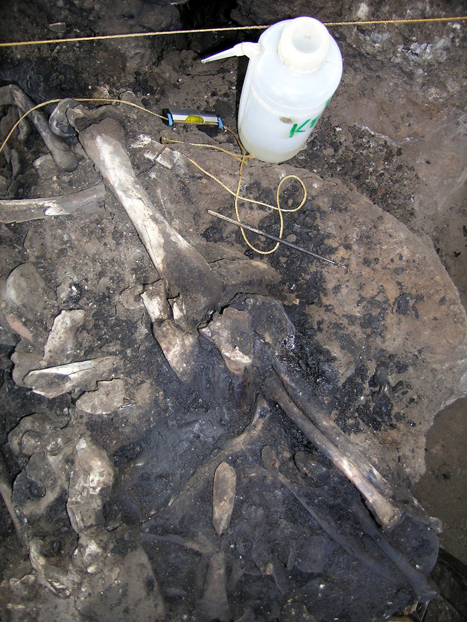Long time, no update, but with good reason: we finally officially "opened" our first fossiliferous grid in our first fossil box from Project 23, and we've been too busy digging to blog. Hopefully, some pictures will make up for the thousand or so words we have not written.
Below, a view of B-1 circa a few weeks ago:
The three highlighted bones above are all tibias, and are all from the right leg. However, they're from three separate animals:
 From left to right, you're looking at lower right hind leg bones of a coyote, a dire wolf, and a young saber-toothed cat.
From left to right, you're looking at lower right hind leg bones of a coyote, a dire wolf, and a young saber-toothed cat.
We finally got the saber-toothed cat pelvis off the top of the grid:
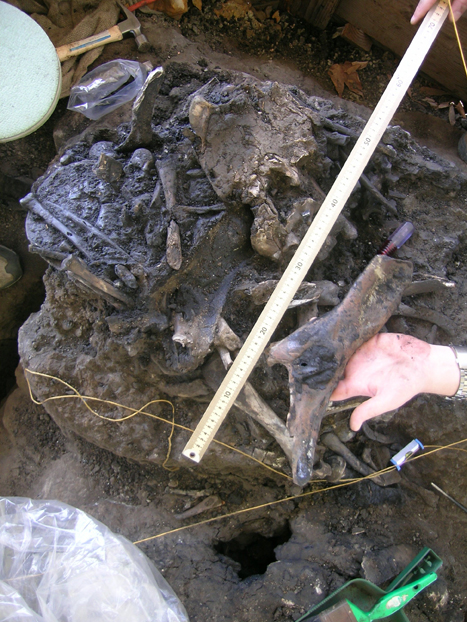 Note the pelvis-shaped impression in the ground to the left.
Note the pelvis-shaped impression in the ground to the left.Volunteer-of-the-Century Harry made us a brand new tool box:
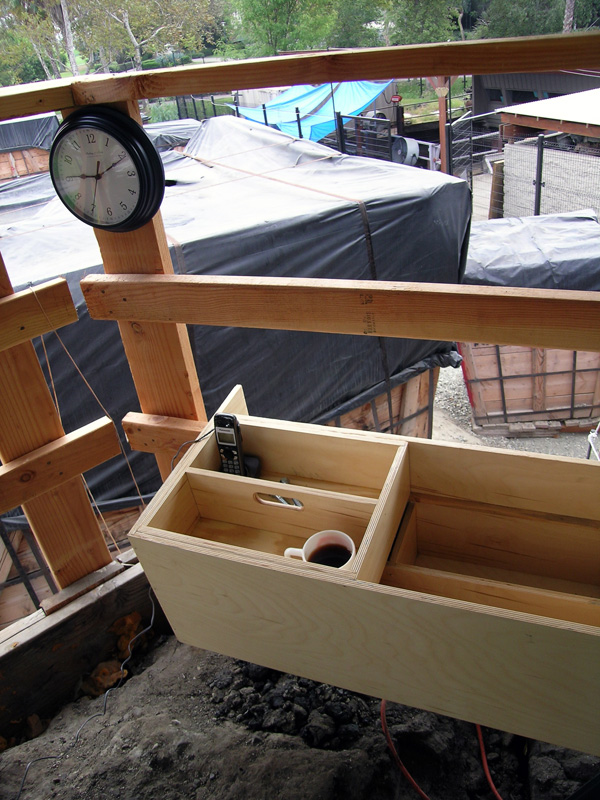 which now holds our brand new phone, our brand new field notebooks, our brand new meter sticks, our really-old-but-still-totally-useful comparative collection of dire wolf and saber-toothed cat carpals and tarsals (wrist and ankle bones), and, apparently, my three-hour-old cup of coffee.
which now holds our brand new phone, our brand new field notebooks, our brand new meter sticks, our really-old-but-still-totally-useful comparative collection of dire wolf and saber-toothed cat carpals and tarsals (wrist and ankle bones), and, apparently, my three-hour-old cup of coffee.
And speaking of volunteers, we've started bringing them up to help us dig! Tara-the-ever-persistent, of course, was our first:
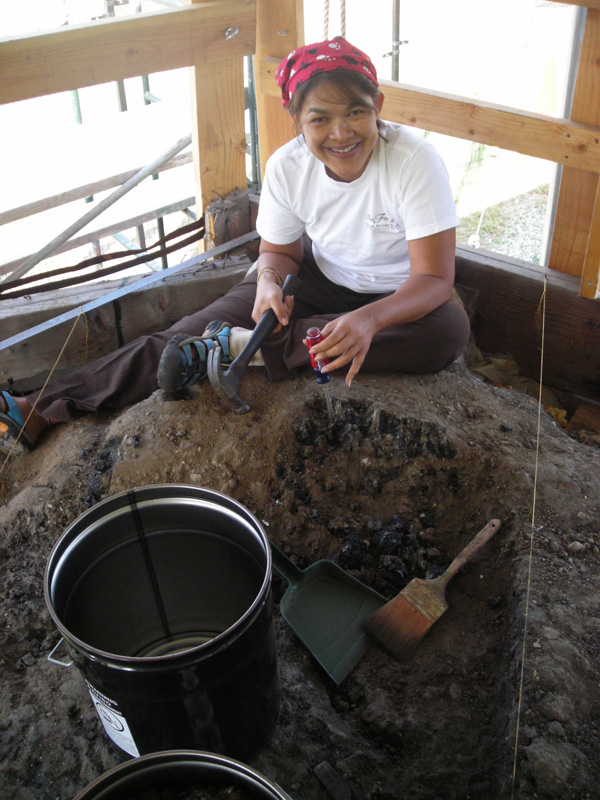
And finally, we put together a small exhibit for the museum explaining how Project 23 came to be:
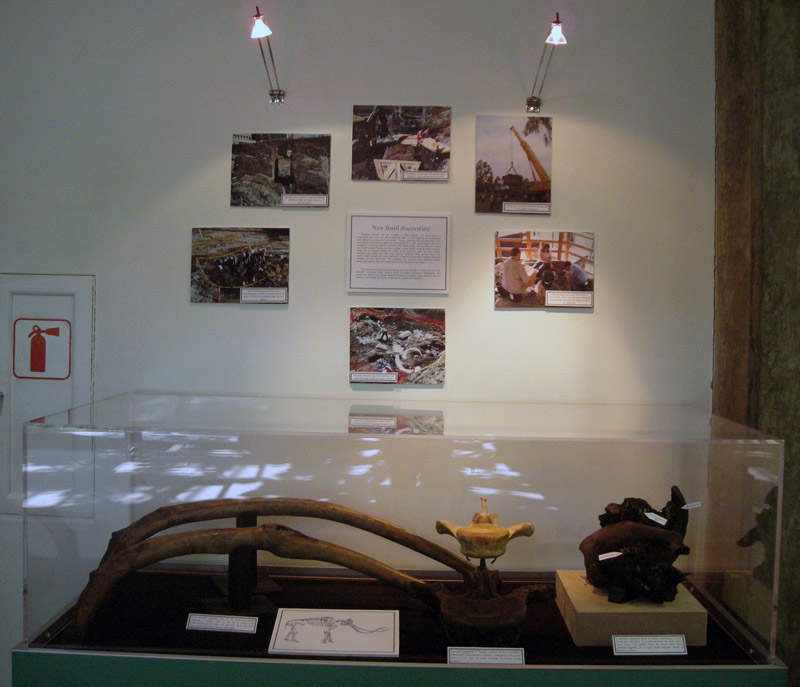
The two ribs on the left of the case are from our semi-articulated mammoth; the rib on top is normal, but the rib on the bottom has a large bump in the middle from a break that healed during the mammoth's lifetime. Zed (as the mammoth has been dubbed by lab supervisor Shelley Cox) has several broken-and-re-healed ribs on his right side; he must have sustained a massive injury which he subsequently recovered rather nicely from. And the fossil block on the right is the same block of skulls that came from the "blob" we wrote about last month. The brown vertebra in the middle is from Zed; the white vertebra above it is from Jenny:
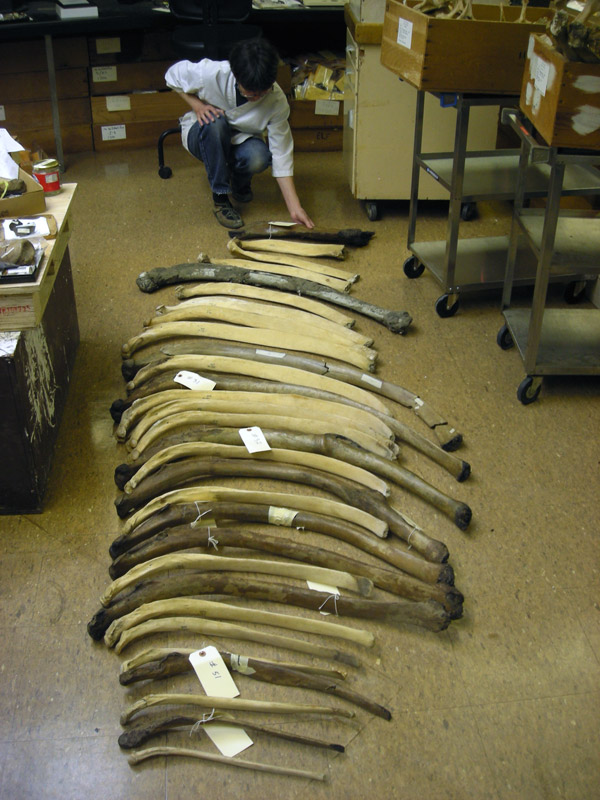 Shelley borrowed an Asian elephant skeleton from the Natural History Museum and has been using it to help identify Zed's (much larger, but still comparable) elements. In the photo above, Shelley is comparing Zed's ribs to Jenny's (Zed's are La Brea brown; Jenny's are white).
Shelley borrowed an Asian elephant skeleton from the Natural History Museum and has been using it to help identify Zed's (much larger, but still comparable) elements. In the photo above, Shelley is comparing Zed's ribs to Jenny's (Zed's are La Brea brown; Jenny's are white).